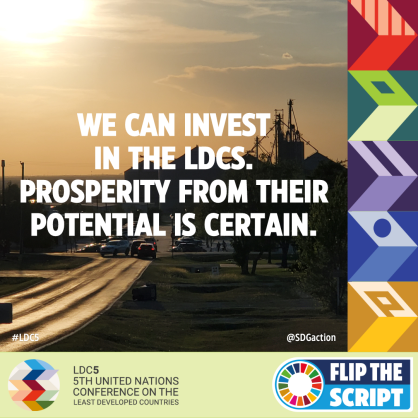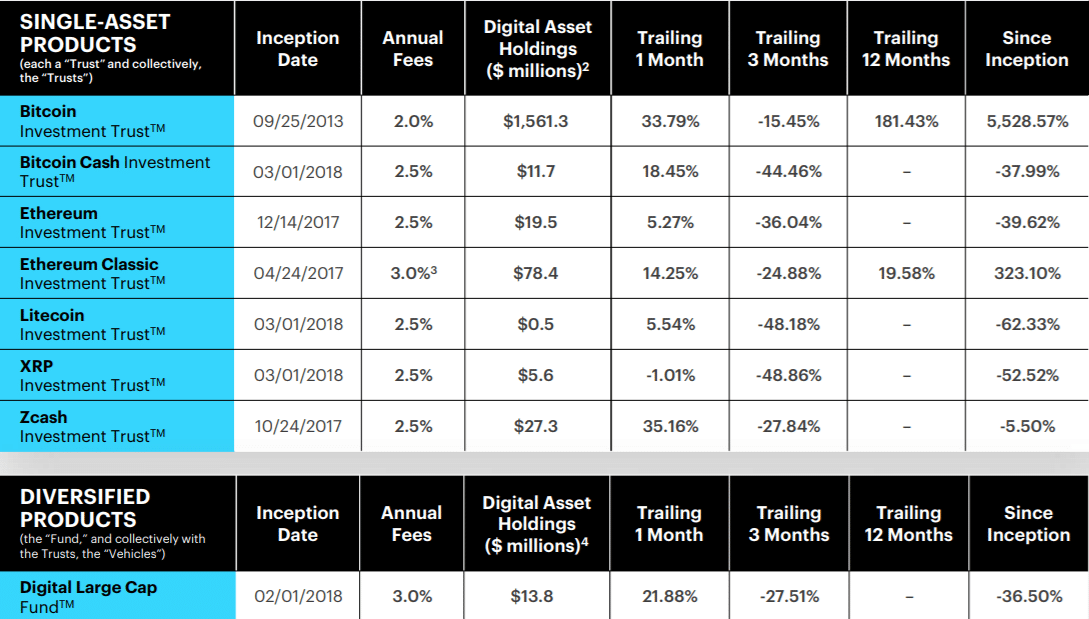Building Resilience In Least Developed Countries: A Path To Sustainable Development

Table of Contents
Strengthening Economic Resilience
A robust economy is the cornerstone of resilience. LDCs often rely heavily on a few primary exports, making them susceptible to global price fluctuations and market volatility. Diversification and investment in human capital are crucial for building a more resilient economic base.
Diversifying Economies
Reducing dependence on a few key exports is paramount for building economic resilience in LDCs. This requires a multifaceted approach:
- Promoting agricultural diversification beyond cash crops: Shifting from monoculture farming to diverse cropping systems enhances food security and reduces vulnerability to crop failures. This includes promoting climate-smart agriculture techniques and supporting farmers in adopting more resilient crops.
- Investing in value-added processing industries: Processing agricultural products locally adds value, creating jobs and boosting export earnings. This requires investments in infrastructure, technology, and skills development.
- Fostering the growth of the tourism sector (where applicable): Tourism can be a significant source of revenue and employment, especially in countries with natural beauty or cultural heritage. Sustainable tourism practices are essential to minimize environmental impact.
- Supporting the development of small and medium-sized enterprises (SMEs): SMEs are the backbone of many economies, creating jobs and driving innovation. Access to finance, training, and market opportunities is crucial for their growth.
Investing in Human Capital
Education and healthcare are fundamental to economic resilience. A healthy and educated workforce is more productive and adaptable to economic changes.
- Improving access to quality education at all levels: Investing in schools, teacher training, and educational resources is crucial for improving literacy rates and equipping individuals with the skills needed for the modern economy. This includes promoting digital literacy and STEM education.
- Investing in healthcare infrastructure and preventative healthcare: A healthy population is a productive population. Investing in healthcare infrastructure, disease prevention programs, and access to essential medicines enhances productivity and reduces healthcare costs.
- Promoting vocational training and skills development programs aligned with market demands: Vocational training programs equip individuals with the specific skills needed for jobs in growing industries, enhancing employability and reducing unemployment.
- Empowering women through education and economic opportunities: Empowering women through education and economic opportunities boosts economic growth and reduces poverty. This includes access to finance, land ownership, and equal opportunities in the workplace.
Building Robust Financial Systems
Access to finance is vital for economic growth and stability. Robust financial systems provide the necessary resources for businesses and individuals to invest, grow, and weather economic shocks.
- Developing inclusive financial systems: This includes extending financial services to underserved populations, particularly in rural areas, through mobile banking and other innovative financial technologies.
- Promoting access to microfinance and credit for SMEs: Microfinance institutions provide crucial access to credit for small businesses, enabling them to expand and create jobs.
- Strengthening regulatory frameworks for financial institutions: Strong regulatory frameworks ensure the stability and soundness of financial institutions, protecting depositors and promoting financial stability.
- Investing in financial literacy programs: Financial literacy programs empower individuals and businesses to make informed financial decisions, reducing vulnerability to financial scams and promoting responsible borrowing and saving habits.
Enhancing Environmental Resilience
Environmental resilience is crucial for LDCs, which are often highly vulnerable to climate change impacts and natural disasters. Sustainable resource management is vital for long-term development.
Climate Change Adaptation and Mitigation
Addressing climate change impacts is paramount for building environmental resilience. This requires a combination of adaptation and mitigation strategies.
- Investing in climate-resilient infrastructure: Building infrastructure that can withstand extreme weather events, such as floods and droughts, is essential for protecting lives and assets.
- Promoting sustainable agriculture practices: Sustainable agriculture practices enhance food security and reduce vulnerability to climate change. This includes drought-resistant crops, water conservation techniques, and soil health management.
- Implementing early warning systems for natural disasters: Early warning systems allow communities to prepare for and respond to natural disasters, minimizing loss of life and property.
- Protecting and restoring natural resources (forests, water): Protecting and restoring natural resources provides essential ecosystem services, such as water purification and carbon sequestration, enhancing resilience to climate change.
Sustainable Resource Management
Protecting natural resources for future generations is vital for long-term development. Sustainable resource management practices ensure the availability of resources for future generations while minimizing environmental degradation.
- Implementing sustainable land management practices: Sustainable land management practices prevent soil erosion, desertification, and land degradation, ensuring the long-term productivity of land resources.
- Promoting responsible forestry and fishing practices: Sustainable forestry and fishing practices ensure the long-term availability of these resources while minimizing environmental damage.
- Conserving biodiversity: Conserving biodiversity protects the vital ecosystem services provided by natural ecosystems, enhancing resilience to environmental shocks.
- Managing water resources efficiently: Efficient water management ensures the availability of water for human consumption, agriculture, and industry, minimizing water scarcity.
Fostering Social and Political Resilience
Social and political stability are critical for building resilience. Good governance, strong institutions, and social safety nets are essential for creating a stable and inclusive society.
Good Governance and Institutional Strengthening
Strong institutions are vital for building social and political resilience. Good governance ensures transparency, accountability, and the rule of law.
- Promoting transparency and accountability in government: Transparency and accountability in government build trust and reduce corruption, promoting good governance.
- Strengthening the rule of law: A strong rule of law protects citizens’ rights and ensures that disputes are resolved fairly, contributing to social stability.
- Investing in anti-corruption measures: Corruption undermines development and erodes trust in government. Investing in anti-corruption measures promotes good governance and reduces inequality.
- Promoting participatory governance and citizen engagement: Participatory governance ensures that citizens have a voice in decision-making, leading to more inclusive and effective policies.
Social Safety Nets and Conflict Prevention
Protecting vulnerable populations and mitigating conflict risks is crucial for building social resilience. Social safety nets provide essential support to those most vulnerable to economic shocks and other crises.
- Implementing social protection programs (e.g., cash transfers, food assistance): Social protection programs provide a safety net for vulnerable populations, reducing poverty and inequality.
- Investing in conflict resolution and peacebuilding initiatives: Investing in conflict resolution and peacebuilding initiatives reduces the risk of conflict and promotes peaceful coexistence.
- Promoting social cohesion and inclusion: Promoting social cohesion and inclusion reduces social divisions and strengthens community bonds, enhancing resilience to shocks.
- Strengthening community resilience: Strengthening community resilience empowers communities to respond to shocks and crises, building resilience at the local level.
Conclusion
Building resilience in Least Developed Countries is not merely a development goal; it's a prerequisite for sustainable development. By strategically investing in economic diversification, environmental protection, and good governance, we can create more stable and prosperous societies. The path forward requires collaborative efforts from governments, international organizations, the private sector, and civil society. Let's work together to strengthen resilience and build a more sustainable future for Least Developed Countries. Invest in building resilience today, for a more prosperous tomorrow. Start building resilience now, and contribute to a more sustainable future for LDCs.

Featured Posts
-
 Xrp On The Verge Of A Record High Grayscale Etf Application And Market Analysis
May 07, 2025
Xrp On The Verge Of A Record High Grayscale Etf Application And Market Analysis
May 07, 2025 -
 The Papal Conclave A Detailed Explanation Of The Election Process
May 07, 2025
The Papal Conclave A Detailed Explanation Of The Election Process
May 07, 2025 -
 Vodni Festival Songkran Tajske Ulice Spremenjene V Bojisca Z Vodo
May 07, 2025
Vodni Festival Songkran Tajske Ulice Spremenjene V Bojisca Z Vodo
May 07, 2025 -
 Nba Playoffs Heat Vs Cavaliers Your Guide To Game 1 Predictions And Bets
May 07, 2025
Nba Playoffs Heat Vs Cavaliers Your Guide To Game 1 Predictions And Bets
May 07, 2025 -
 Simone Biles Y La Terapia Como La Ayuda Profesional La Mantiene Enfocada
May 07, 2025
Simone Biles Y La Terapia Como La Ayuda Profesional La Mantiene Enfocada
May 07, 2025
